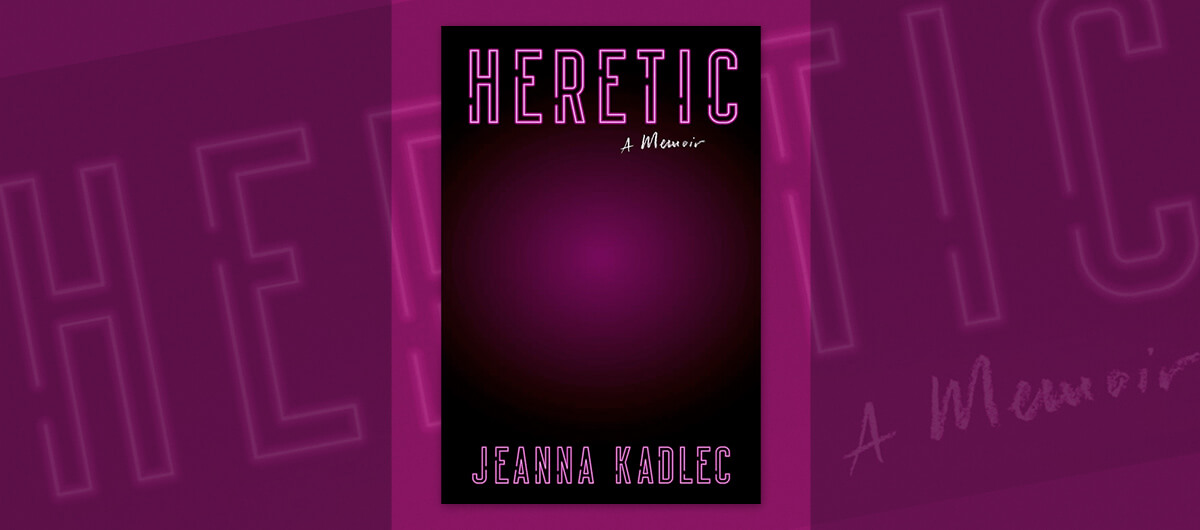

Religion
When Did the U.S. Become So Evangelical?
Boston was the birthplace of both American democracy and religious fundamentalism. In this exclusive excerpt from 'Heretic,' Jeanna Kadlec traces the devastating impact of the politicization of white Evangelical Christianity.
This article was made possible because of the generous support of DAME members. We urgently need your help to keep publishing. Will you contribute just $5 a month to support our journalism?
Boston was the birthplace of American democracy, all the Freedom Trail tour guides said—ignoring Philadelphia, I suppose. But they would have been more correct to call it the birthplace of this country’s religious fundamentalism.
Though my husband and I did not technically live in Boston proper, but across the Charles River in Somerville, I was in the city at least once a week. Walking up the Park Street subway stop landed you squarely on the Boston Common, that same patch of land where farmers used to herd their animals and where the Puritans executed anyone they deemed a heretic. By the time we moved to Boston, that kind of fundamentalism within the community and government was long gone, transmuted into a more insidious sort of evangelical control folks in my graduate program denied was present. But didn’t they have the same dollar bills in their wallets that I did, the ones printed with “In God We Trust”?
That phrase didn’t appear on American currency until the religiously zealous President Eisenhower, advised by the evangelical Reverend Billy Graham, signed it into law as our nation’s official motto in 1956, two years after Congress officially recognized a fresh addition to the initially secular Pledge of Allegiance: “under God.” The law mandated that the “In God We Trust” motto be printed on all paper U.S. currency. In 2011, the U.S. House of Representatives passed a widely bipartisan resolution affirming the national motto.
In elementary school, I dutifully repeated the Pledge of Allegiance every morning; I can still recall each word by heart: “I pledge allegiance to the flag of the United States of America, and to the republic for which it stands, one nation under God, indivisible, with liberty and justice for all.” Schoolchildren recite a commitment to a Christian nation, one that was made law by an evangelical Presbyterian president (Eisenhower was raised Mennonite. Later in life, his parents became Jehovah’s Witnesses) encouraged by his evangelical adviser. “Out of faith in God, and through faith in themselves as His children, our forefathers designed and built the Republic,” Eisenhower said in a 1953 radio address, keen to encourage faith as an antidote to the perceived threat of communism.
One of the virtues 20th- and 21st-century evangelical Christianity shares with its mother country is its adaptability. For a faith so famous for its stalwartness, it’s important to remember that it was born on the frontier, a movement that relies on moving its goalposts, on motivating its base believers toward retaining supremacy by constantly identifying new threats to its survival. First Indigenous peoples. Civil rights. The women’s movement. LGBTQ+ equality. Universal health care. Abortion. Evangelicalism perceives the most basic assertions of human dignity as threats to its power, and it uses the language of history and nostalgia to conflate and communicate these fears.
White evangelicals weren’t always so blatantly in bed with specific political parties, let alone the Far Right. But it’s challenging to pinpoint the precise beginning of the relationship between evangelicals and organized political movements, when the anxiety over the tacit loss of white power first started to materialize. Do you start with the Scopes Monkey Trial—the fight over evolution in schools in the 1920s, in which evangelicals were first satirized and humiliated on a national scale, the trial that saw the subsequent, quiet birth of the Christian private school machine? Do you start with the power couple that is Graham and Eisenhower and their institution of the National Prayer Breakfast in 1953—which is now a Far Right power-broker event that LGBTQ+ people of faith are excluded from? Do you go earlier, to the schisms in Protestant denominations over slavery or even before, into the antislavery Protestant churches that themselves still refused to desegregate their sanctuaries, which led to the creation of some of the Black Protestant denominations we know today?
The results of this close relationship between organized evangelicalism and organized politics are dotted throughout American history: the civil rights movement setting off the founding of a wave of new private, all-white Christian schools in the South in response to desegregation, for instance. The legal fights over the right to establish these Christian private schools, not abortion (historically a Catholic issue), were what initially galvanized evangelicals en masse toward the Republican Party. To wit: In 1970, three years before Roe v. Wade, a staggering 70 percent of Southern Baptist pastors supported abortion to protect the physical or mental health of the mother, and in 1971 the Southern Baptist Convention (SBC) came to a denomination-wide resolution supporting legislation that would “allow the possibility of abortion” under a wide number of conditions.
They didn’t flip sides until well after Roe was decided—it was the increasingly unpopular and, of course, illegal practice of segregation that caused white evangelicals to seek out new issues to coalesce under. During the 1970s, Nixon’s “Southern Strategy” was designed to appeal to white voters’ racism and capitalize on existing tensions in the South, such as the desegregation of schools and the legal battles over private Christian academies—a fight that white evangelicals were already at the front lines of. The conditions were ideal for Republicans to swoop in and mobilize a deeply angry, insular, and highly organized demographic; it wasn’t long before white evangelicals became the reliable, religiously motivated base of the Republican Party. It was the anti-Black Southern Strategy that would ultimately make the word “evangelical” indistinguishable from “Republican” while obscuring the explicitly racist goals of its economic policy with talk of “states’ rights” and “family values.”
Republican consultant Lee Atwater later discussed plainly in an interview the goals of the Southern Strategy and what would come to be key conservative and evangelical talking points: By 1968, you can’t say [racial expletive]—that hurts you, backfires. So you say stuff like, uh, forced busing, states’ rights, and all that stuff, and you’re getting so abstract. Now, you’re talking about cutting taxes, and all these things you’re talking about are totally economic things and a byproduct of them is, blacks get hurt worse than whites … . “We want to cut this,” is much more abstract than even the busing thing, uh, and a hell of a lot more abstract than [racial expletive].
One of the greatest misunderstandings of power is that you can always see it. Certainly, you sometimes can; in particular, on individual levels: a pastor explicitly instructing his flock to shun a person who has left the church is a clear use, or abuse, of power. But power is also often invisible, something that can escape conscious recognition. Power exists in the language we start absorbing from the time we are in our parents’ wombs, in the experiences for which there are no words; in who can say what to whom without repercussion. Power is not always solely possessed by certain individuals; it is also the unseen mechanism that informs how we position ourselves every day, how we make decisions in deference to whom—to God, to authority, or even to ourselves.
Excerpted from HERETIC: A Memoir by Jeanna Kadlec. Copyright © 2022. Available from Harper, an imprint of HarperCollins Publishers.
Before you go, we hope you’ll consider supporting DAME’s journalism.
Today, just tiny number of corporations and billionaire owners are in control the news we watch and read. That influence shapes our culture and our understanding of the world. But at DAME, we serve as a counterbalance by doing things differently. We’re reader funded, which means our only agenda is to serve our readers. No both sides, no false equivalencies, no billionaire interests. Just our mission to publish the information and reporting that help you navigate the most complex issues we face.
But to keep publishing, stay independent and paywall free for all, we urgently need more support. During our Spring Membership drive, we hope you’ll join the community helping to build a more equitable media landscape with a monthly membership of just $5.00 per month or one-time gift in any amount.




















































































